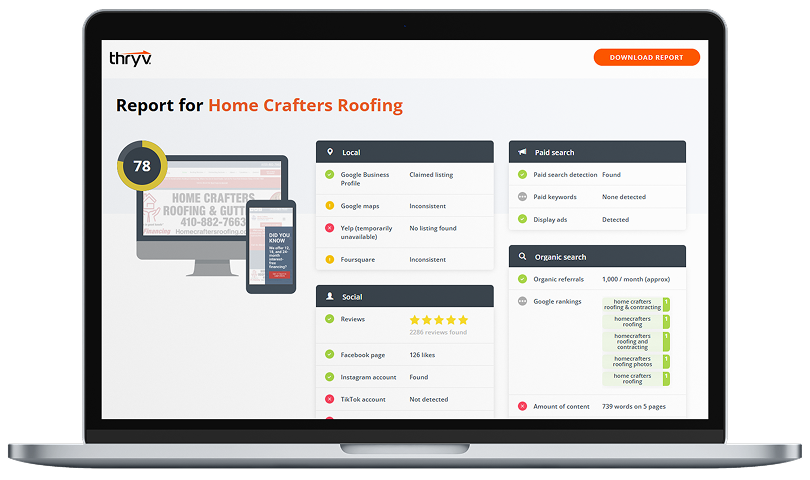Nothing can ruin a small business owner’s day quite like a bad Google review. But there’s good news:
- You’re not alone. Even the best, most successful, and passionate business owners get them.
- You can do something about negative reviews.

We’re sharing our expert tips to help you boost productivity, eliminate time-wasting tasks, and more in this free guide.
Download Now
Using a few simple steps, you can turn a bad Google review into a positive comment for your business. In this blog, we’ll explore how, along with tips and examples of real businesses managing their Google reviews.
How To Delete a Bad Review on Google
Let’s dive in by first exploring Google’s spam filters, which can get negative reviews deleted for you.
1. Trust Google’s automated spam filters.
Before you even have to lift a finger, Google is at work sifting through reviews on your behalf. This saves you work because any feedback that violates Google’s content policies is automatically removed.
What type of reviews will Google remove for you?
Google uses automatic detection to remove reviews it finds to be:
- Spam: The list of what Google considers spam is long, and you can read the entire list on its spam policies page. But to sum it up, if it’s false, misleading, or fake, Google gives it the boot.
- In violation of other policies: In addition to spam, Google reserves the right to delete anything that violates its general content policies, which include illegal, offensive, or dangerous content. Explore a detailed outline of policies on Google’s content policies page.
Google’s automated system will catch the majority of reviews that violate these conditions (it even has a team that reviews web content and catches any spam that may have slipped past the first round), but what do you do when a bad Google review isn’t automatically deleted?
2. Log into your Google Business Profile.
If Google doesn’t automatically delete a bad review for you, it’s time to take things into your own hands.
But remember, Google strives to maintain authenticity, so just because you want a review deleted doesn’t mean it will happen. In fact, all you can do is flag a review, and then Google will decide the outcome.
If you want to flag a review, start with logging into your Google Business Profile.
3. Click “Read Reviews.”
This is where all the reviews about your business will show up. From here, you can report reviews, but you can also browse what people are saying about your business any time you’d like.
4. Find the review you want to flag and click “Report Review.”
Once you find the review you want to report, click on the three dots in the top right corner and choose “Report Review.”
5. Select why you want to report it.
A list of reasons for reporting will pop up, and you’ll have to choose which one is most relevant to your situation. Then, it’s in Google’s hands. Their team will notify you once they’ve reviewed your case and come to a decision.
As you know, for a review to be removed by Google, it has to violate one of its policies.
That means these steps aren’t the end-all-be-all to bad reviews. So, it helps to have additional strategies in your back pocket if Google decides to decline your request.
Reminder: Despite how it may feel, bad reviews are not the end of the world for your business. They can be an opportunity to improve, make things right, and win back customers.
Steps to Take if You Can’t Delete a Bad Google Review
You know that saying that goes “It’s a bad day – not a bad life.”? Well, you can apply that logic to business reviews too: It’s a bad review – not a bad business.
I know … This is a tad cliche, but it’s a great reminder that poor reviews don’t define your business, and if Google deems the review legitimate, there are still ways to turn the situation around.
Check out three strategies that can help you turn a bad Google review into a positive comment for your business
1. Respond.
You’d be surprised by how many businesses ignore bad reviews. You should be responding to reviews – good, bad, or indifferent – but it’s especially important to reply to negative ones.
Take this as an opportunity to offer a redeeming interaction with the person who left the feedback. Here are a few tips when responding:
- Don’t dismiss their experience.
- If you’re upset, wait until you cool down to respond.
- Make sure your reply has a kind and helpful tone.
- Offer next steps, such as giving them a way to contact your team, a replacement product, or an offer/perk to help make things right.
Example in action:
This business does a few things right in its response above. First and foremost, it responds quickly. The Managing Partner also introduces themself by name, apologizes for the customer’s experience, assures them they’ll tell their staff, and, most importantly, offers a free meal in the future to smooth things over!
That was a great reply, but I know responding to reviews isn’t always easy, so try crafting a few options to choose from or let an AI review response tool do it for you.
2. Run a new campaign to collect positive reviews.
Once you’ve responded, boost your spirits with some authentic, positive feedback from happy customers. This will also ensure a poor review isn’t the first thing potential customers see on your Google Business Profile.
Use your CRM software to segment a group of happy customers and send an email asking for their reviews and clear instructions on how to do so. The key is to make this as easy as possible, so keep your email friendly and short and include a clear link to your business profile on Google.
For an added incentive, offer a discount code or another perk for those who do leave a review.
Tip: Use this free tool to generate a link to your Google Business Profile
3. Compile data and look at bad review trends.
Above all, don’t let a bad review go to waste. Instead, take their feedback to heart and change your business for the better.
A great way to start is to compile all critiques in your reviews into a document and discuss them with your team.
See if any poor themes and trends need to be addressed. From there, you can strategize what parts of your customer experience need to change.
Above all, remember that listening to customer feedback and implementing changes is how incredible businesses are made! So, don’t get discouraged by negative comments; each one is an opportunity to level up.
Best Practices to Follow for Google Reviews (+ Examples)
When you respond to your audience on Google, you show them that you’re listening, which leads to them returning for repeat business.
But responding is just one piece of the puzzle. There are a few other best practices to keep in mind as you interact with reviewers.
1. Respond to everyone.
People are taking the time to leave feedback, so make sure you’re taking the time to provide a thoughtful, relevant response in return. By responding to all reviews, no matter what they say, you’ll show that you’re on top of your game and care about your customers.
The review below is a great example of responding to everyone. The customer left a glowing recount of their experience, so there’s no issue that needs to be addressed, but the owner still responds to thank them and even offers a personal touch by referencing the nail colors they chose.

2. Respond quickly.
If you want to position your business as one that’s attentive, professional, and values customer input, then timely responses are a must. Aim to reply within 24-48 hours whenever possible.
Quick responses will impress the reviewer and signal to potential customers that you’re responsive and engaged.
3. Offer next steps.
Some reviews require more legwork, and you might have to offer next steps.
These steps could be a free resource to enrich their experience or an easy way to contact support if they have issues. The key is to be attentive to what the reviewer is saying and offer something helpful in return.
4. Contact them outside of Google.
You may want to investigate someone’s review a bit further. For positive reviews, this could involve asking for a video testimonial, getting permission to use it on your website, or providing a surprise bonus just to say thank you.
On the other hand, bad reviews may benefit from a team member reaching out to hear more about what went wrong and discover how to make it right. So, don’t be afraid to provide reviewers with your email or phone number, or reach into your CRM to get their contact info and reach out yourself.
The following one-star review couldn’t have been fun for the business to receive, but the owner handles it while remaining professional and factual. Prior to this review, the business had reached out and offered a refund, which is a prime example of being proactive and contacting unhappy customers outside of Google to make amends.
Their reply reminds the customer of what the business has done, while showing anyone who sees it that this salon can be trusted to take action when things aren’t right.
Deleting Google Reviews for Your Business
How you manage reviews plays a key role in customer retention, repeat business, and lead generation. By learning how to delete a bad review on Google and respond to other feedback effectively, you’re already on the right track.
Want to keep building your online presence? Download our free guide below for more proven strategies to help you win more business online.





